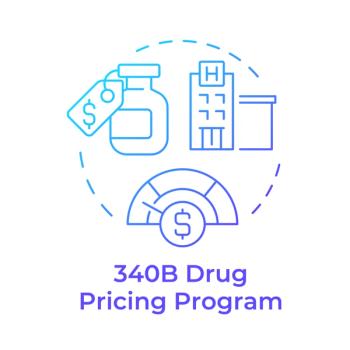
Seven healthcare industry trends to watch
One month into 2016, it’s clear that this will be a year of massive change for the managed care industry. Here are seven predictions for some of the key issues that will emerge, intensify, or be resolved by the end of this year.
One month into 2016, it’s clear that this will be a year of massive change for the managed care industry. Here are seven predictions for some of the key issues that will emerge, intensify, or be resolved by the end of this year.
1. The impact of recent health plan mergers will come into focus.
It is likely that the major payer consolidations will get sorted out this year. The big mergers are already starting to impact contract negotiations between the health plans and providers. As the larger health plan organizations continue to cut operating costs and slow the growth in reimbursement rates, providers will respond by consolidating to form larger and more integrated health systems. Expect the Federal Trade Commission to expand its examination of provider consolidations. Organizations that are consolidating must demonstrate both pre- and post-merger consumer benefit as a result of these affiliations or acquisitions.
2. Value-based arrangements will gain more momentum.
The industry is still waiting to see if the federal government will make a move on the “Cadillac” Tax, which Congress delayed for two years at the end of 2015. The question is, will Congress eliminate it all together? If they do not eliminate it, we can expect to see further benefit reductions and higher deductibles and coinsurances as employers focus on meeting the cost limits prescribed. The government and employers will continue to develop and implement new ways to bend the cost-curve. Health plans will double their efforts to create “value” or “high performing” networks that will offer narrower networks in exchange for lower premium and out-of-pocket costs to consumers. This will accelerate provider consolidation, either through mergers, affiliations, or clinically integrated networks as they attempt to offer a broader, yet differentiated, “high performing” network to the market. Once formed, these newly established networks will have to demonstrate value to attract employers and effectively move market share. Positioning your organization as the lowest cost leader in your market will not be enough; quality and patient experience and satisfaction must be met simultaneously.
3. Provider-owned health plans will gain more interest from health systems.
Health systems that are continuing their transformation to clinically integrated networks will face more pressure to have more control of their reimbursement streams and incentive systems. As such, expect more providers to become interested in owning a health plan or collaborating with other providers who already own a health plan. In addition, there will likely be a shift in strategy from competing directly with large health plans to a “plan-to-plan” strategy, which will allow the integrated delivery networks (IDNs), clinically integrated networks, and health plans to collaborate more easily. Finally, some recently established provider-owned health plans have struggled, so new entrants will be more selective and cautious as they refine their market and product approach to this strategy.
4. It will be an important year for health insurance exchange products.
With the Affordable Care Act (ACA) insurance exchange products continuing to grow as we move into 2016, eclipsing the 8.8 million subscriber mark, a critical success factor of this ACA provision relies on insurers continuing to offer these products, despite incurring losses in the initial years. For instance, UnitedHealthcare Group’s 2015 annual earnings report showed that the insurer lost $720 million from exchange products, but will continue to offer and closely monitor the performance of those products throughout 2016. As a result, health systems should expect a continued increases in high-deductible plans (more bad debt on exchange accounts and a need for ever increasing focus on revenue management), and increased pressure on reimbursement rates as health plans continue to adjust these products to the newly insured’s needs and their own need for profits.
5. Consumer Operated and Oriented Plans (“CO-OPs”) will continue to lose momentum.
An alarming 12 of the 23 health insurance CO-OPs have failed in roughly three years of existence, and the trend is expected to continue into 2016, as the 11 CO-OPs that remain operational-are all operating in financial stress. The ACA-led program, which was funded with $2.5 billion of taxpayer dollars, has shown an inability to compete on the exchanges with the large commercial health plans. The original intent of these plans was to increase competition on the exchanges, and lower premiums for consumers purchasing individual exchange products, but without sufficient capital in reserves, state insurance commissions have forced many to shut due to lack of solvency. In all, closures of CO-OPs have resulted in over 700,000 Americans losing coverage, and over $1 billion of taxpayer dollars lost to-date. With the CO-OP program deemed largely as a failure, the result is fewer options for health insurance coverage to individuals and businesses. Expect to see further CO-OPs failures in 2016, and ultimately, movement toward exiting the market.
6. Compliance will become an important issue in the coming years
Federal and State actions and fines will highlight the new oversight and conduct expected of health plans and providers. Physicians and networks who are working to take on greater risk and seek rewards by lowering or limiting the number of providers in networks will come under greater examination by the regulators and by health plans. Building compliance in early to every policy and action, and then monitoring any delegated service providers, and any activities with potential member harm, requires focus and action at every level of management and governance. Do not be surprised if compliance actions become ever more common.
7. Is capitation making a comeback?
Expect to hear more about capitation this year, thanks to the implementation of the Centers for Medicare & Medicaid Services’ (CMS) Next Generation ACO (NGA) program. Most of the provider participants in this program are organized, sophisticated and have significant experience in managing financial risk. In addition, many of the participants are already at risk for managing Medicare Advantage populations through capitation or other fixed payment methodologies. Although performance year 1 (calendar year 2016) in NGA is still a fee-for-service platform, some participants may be willing to learn from their experiences and take the plunge in later years and go at-risk through capitation. Expect CMS to highlight and regularly announce the efforts for these participants. NGA could be the program that begins to further shape the health plans thinking and approach to providers taking more financial risk.
In coming months, the greatest challenge for most healthcare organizations will be finding the right pace for adapting to or embracing new payment models. Most organizations are now seeing the direction, but will have to find the right pace and organizational commitment to continue through this industry-wide transformation.
Adam Medlin, MHA is senior manager, GE Healthcare Camden Group, and Matthew Briskin, MPH, is senior consultant with the firm. Adam Medlin specializes in finance, managed care, and value-based payment models. He can be reached at
Newsletter
Get the latest industry news, event updates, and more from Managed healthcare Executive.






















































